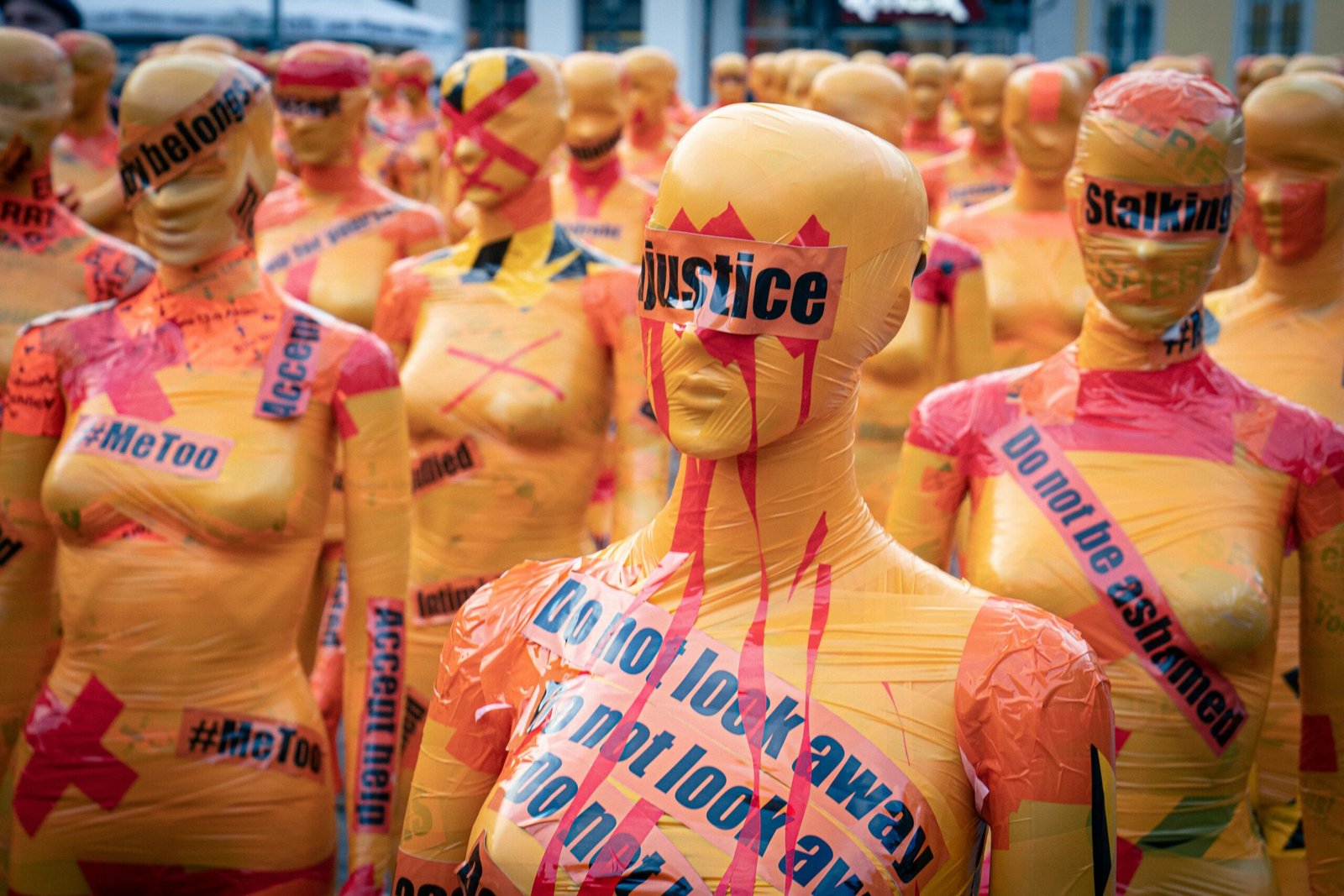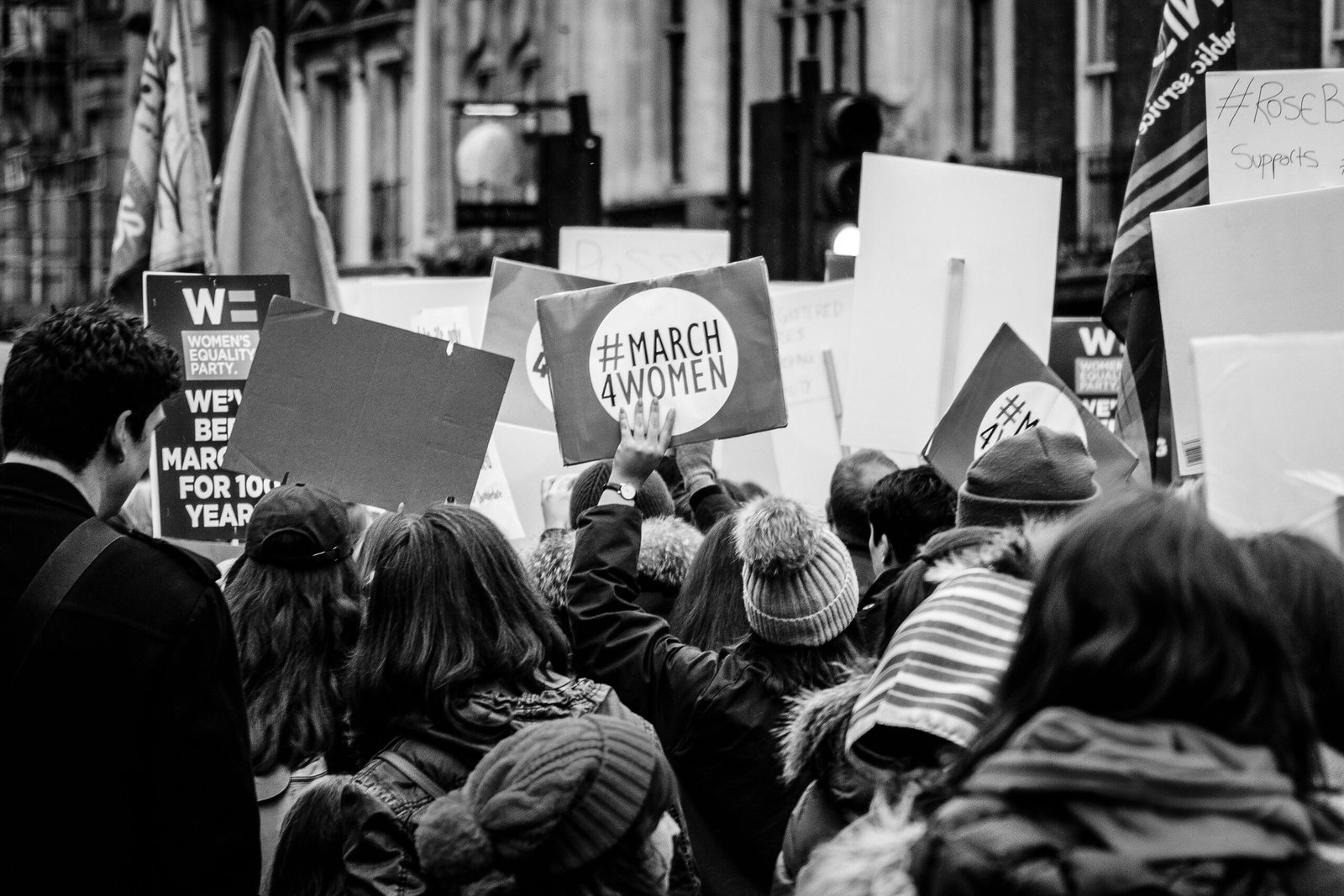
Introduction: Understanding the Context
The political landscape in the United States during the Trump administration has been marked by significant controversy and division, prompting widespread debate on issues related to justice and equity. From the onset of his presidency in January 2017, Donald Trump implemented policies that many viewed as undermining civil rights and diminishing the integrity of the justice system. Key actions such as the travel ban affecting predominantly Muslim countries, immigration enforcement policies, and criminal justice reform initiatives have raised alarm among various advocacy groups. These measures ignited discussions about the implications for justice, particularly regarding marginalized communities.
Throughout his time in office, Trump often leveraged rhetoric that echoed both populist sentiment and deep-seated societal divisions, which contributed to an atmosphere where the pursuit of justice became increasingly contentious. The administration’s stance on law enforcement, including vocal support for police, was frequently criticized for exacerbating existing disparities in the justice system. In addition, Trump’s approach to race relations, most notably in the aftermath of the George Floyd protests, was perceived by many as a regression rather than an opportunity for progress in addressing systemic racism.
Moreover, the political polarization observed during this period has led to a broader questioning of institutional integrity and accountability. Events such as the impeachment trials and the Capitol riot on January 6, 2021, have further complicated the political landscape, raising doubts about the efficacy of existing mechanisms for achieving justice. Such developments have not only affected national discourse but have also led to a sense of urgency for advocates fighting for justice and equity across the nation. This nuanced context serves as a backdrop for understanding the ongoing challenges in the fight for justice in America amid the Trump regime’s era.
The Erosion of Legal Norms
The Trump administration’s tenure has prompted substantial scrutiny regarding its approach to foundational legal principles, leading to an observable erosion of traditional legal norms. Notably, the expansive interpretation of executive power has become a hallmark of this era, with the administration frequently asserting authority that, in previous administrations, was regarded as overreaching. Such assertions not only raised constitutional questions but also invited concern over the balance of power among the branches of government, challenging the established separation of powers and thus impacting the rule of law.
Judicial appointments have also played a critical role in this erosion. Under the Trump regime, there has been a concerted effort to reshape the judiciary, resulting in a significant number of federal judges confirmed who are perceived to align with a more partisan interpretation of the law. This has sparked debates surrounding judicial independence and the integrity of the judicial system. The appointment processes, characterized by increased politicization, have cast doubt on the impartiality traditionally expected from the judiciary, raising alarms about long-term consequences for legal accountability and justice.
Moreover, specific instances have highlighted instances where legal norms have been challenged or subverted. For instance, the dismissal of cases that hold political figures accountable demonstrates a troubling trend where legal recourse appears contingent on political considerations rather than being grounded in justice. Additionally, the use of executive orders to bypass Congressional approval compromised the legislative process, fostering an environment where the law is viewed as subjective rather than objective. Such actions have contributed to a perception of law as a tool of power rather than a framework for justice, posing significant challenges to the integrity of legal norms.
Impact on Social Justice Movements
The Trump regime has profoundly influenced social justice movements across the United States, with implications for racial equality, gender justice, and LGBTQ+ rights. Activism during this era has encountered significant challenges, characterized by polarized rhetoric and policy decisions that have often undermined the progress achieved in prior years. Notably, the administration’s stances on immigration and criminal justice reform have created a hostile environment for vulnerable communities, resulting in heightened tensions and a resurgence of grassroots organizing.
For racial equality, the impact has been stark. The Trump administration’s policies, such as the rollback of federal oversight in police practices, have sparked outrage and mobilization among activists. The Black Lives Matter movement gained momentum in response to a series of high-profile incidents of police violence. The tragic deaths of individuals like George Floyd catalyzed national protests, amplifying calls for systemic change. While these movements faced setbacks, such as increased resistance from certain governmental entities, they also sparked widespread awareness and solidarity, leading to conversations around policy reforms at local and state levels.
In terms of gender justice, the administration’s approach to issues like reproductive rights and healthcare access has galvanized many activists. Legal battles over abortion rights intensified, prompting a resurgence of advocacy for women’s rights. Organizations have mobilized to challenge regressive policies, promoting increased civic engagement and advocacy at the grassroots level. This dynamic has cultivated an environment where marginalized voices are increasingly amplified.
Lastly, the LGBTQ+ rights movement has also seen both setbacks and unexpected gains. Though there have been attempts to roll back protections, particularly targeting transgender individuals in military and healthcare settings, the visibility of LGBTQ+ issues has skyrocketed. Pride events have seen an uptick in participation, and legal victories in courts have provided a foundation for continued advocacy.
Overall, while the Trump administration presents unique challenges for social justice movements, it has also ignited a flame of resilience and activism, paving the way for renewed commitment to civil rights and social equity.
The Role of the Judiciary
The judiciary serves as a crucial pillar in the balance of power within the United States, particularly in times of political upheaval. During the Trump administration, the judiciary faced significant challenges, as various landmark court cases emerged that tested its independence and commitment to justice. Cases involving issues such as immigration policy, election integrity, and civil rights became focal points in evaluating how the judiciary would respond to executive overreach. The responses exhibited by the courts during this period reflect not only the complexities of the legal landscape but also the broader implications for justice in America.
One of the most notable cases was Trump v. Hawaii, where the Supreme Court upheld the administration’s travel ban affecting several predominantly Muslim countries. The ruling underscored the judiciary’s struggle to assert its role in maintaining justice while engaging with politically sensitive matters. Critics of the decision argued that it demonstrated a capitulation to executive power, while supporters claimed it fell within the bounds of national security. This case illustrates the difficulty courts have faced in navigating the tensions between legal principles and the current political environment.
Further, cases such as Department of Commerce v. New York showcased the judiciary’s commitment to upholding justice amidst challenges to administrative decisions that affected the population’s representation and rights. The ruling invalidated the Trump administration’s attempt to add a citizenship question to the census, highlighting the court’s willingness to challenge executive actions perceived to undermine democratic processes. These instances indicate that while the judiciary remains a vital force in defending justice, the ongoing political climate raises questions about the sustainability of its independence.
As this era unfolds, the judiciary’s response to the various challenges it faces will be pivotal in defining the future of justice in the United States. The courts must navigate the delicate balance of upholding the rule of law while resisting political pressures that threaten their autonomy in pursuit of justice.
Media, Misinformation, and Public Perception
The media plays a crucial role in shaping public perception, particularly regarding justice and legality during the Trump administration. Throughout this period, we have witnessed a significant transformation in how information is disseminated and consumed, resulting in both positive and negative implications for society. The rise of digital platforms, social media, and the 24-hour news cycle has altered the landscape of news reporting, granting individuals immediate access to a vast array of information. However, this immediacy often blurs the line between reliable journalism and misinformation.
Misinformation has proliferated during the Trump era, undermining trust in various institutions, including the legal system and government bodies. The public has become increasingly skeptical of media narratives as the dissemination of misleading information has fueled divisions and fostered an environment ripe for distrust. According to various studies, exposure to false narratives can have a substantial impact on public opinion, significantly skewing perceptions of justice and legality. As misinformation spreads rapidly through social media channels, it can obscure the public’s understanding of critical factual information related to legal matters, potentially leading to a distorted view of justice.
This situation places considerable responsibility on media organizations to uphold standards of accountability and integrity. Journalists have a duty to ensure that their reporting is accurate and fact-checked, particularly when addressing issues of legal significance. While partisan reporting can attract attention and generate traffic, it further perpetuates the cycle of misinformation and damages the public’s trust in the media as a credible source. In this era of information overload, it is imperative that the media commits to fostering a culture of transparency and accountability to counteract misleading narratives that challenge the very foundations of justice.
Opposition and Resistance Movements
The Trump administration has faced significant opposition from diverse resistance movements across the United States. These movements have emerged as a response to perceived injustices, seeking to challenge policies that many view as discriminatory or detrimental. Grassroots organizations have taken an active role in amplifying voices that were often marginalized during this period, fostering a sense of community and solidarity among those advocating for justice.
One prominent example is the Women’s March, which gained momentum following the inauguration of Donald Trump in 2017. This movement brought together individuals from various backgrounds to protest against policies that were seen as undermining women’s rights and promoting inequality. The annual gatherings have served as a powerful platform for advocacy, pushing for legislative changes and raising awareness about issues such as healthcare, reproductive rights, and equal pay.
Additionally, organizations like Black Lives Matter have intensified their efforts to combat systemic racism and police brutality during the Trump regime. Their activism not only addresses racial injustices but also seeks to create broader awareness about intersectional issues impacting marginalized communities. Through protests, community organizing, and educational initiatives, these movements strive to bring about transformative change despite the challenges they encounter.
Civic engagement has been another crucial aspect of the resistance against the policies of the Trump administration. Voter registration drives, town hall meetings, and advocacy campaigns have mobilized citizens to participate actively in the political process. Various coalitions have focused on empowering individuals to exercise their rights, encouraging them to voice their concerns and demand accountability from their elected officials. These initiatives highlight the resilience of communities across the nation as they unite to pursue justice.
In summary, the opposition and resistance movements have played a vital role in challenging the policies and actions of the Trump administration. By mobilizing grassroots initiatives and engaging citizens in civic activities, these movements illustrate the ongoing fight for justice and equality in the face of adversity.
The Influence of Partisan Politics
The current political climate has been markedly shaped by partisan divisions, which have a profound effect on the pursuit of justice across various sectors. In particular, issues related to police reform, immigration policy, and healthcare have become contentious battlegrounds, underscoring how both major political parties can influence progress—or the lack thereof—in these domains. The polarization inherent in partisan politics has managed to stymie efforts toward achieving comprehensive reform, as parties often prioritize allegiance to ideology over collaboration for societal advancement.
In the realm of police reform, the pressure from constituents demanding accountability and equity has been met with contradictory responses from lawmakers. While some Democrats have championed reforms aimed at dismantling systemic racism and enhancing community oversight, Republicans have often countered these initiatives, framing them as efforts to undermine law enforcement. Such a dichotomy not only hinders effective policy-making but also fosters mistrust between communities and the very institutions designed to protect them. The inability for both parties to unite around common goals has profound implications for the pursuit of justice.
The healthcare sector, too, suffers from these partisan divides, as discussions about access, affordability, and coverage become entangled in ideological battles. Both parties have at times proposed reforms catering to their respective bases rather than focusing on unifying efforts that would enhance healthcare equity for all. This ongoing tug-of-war exacerbates disparities, leaving vulnerable populations to bear the brunt of inadequate policies.
Lessons from the Trump Era
The Trump era has served as a litmus test for the resilience of social justice movements, revealing critical lessons that can shape future advocacy efforts. One of the most significant takeaways from this period is the necessity for continuous vigilance in the face of potential threats to justice and equity. The experiences from these years underscore that moments of perceived stability can often cloak underlying tensions, emphasizing that advocates must stay alert to shifts in policy and rhetoric that can adversely affect marginalized communities.
Community solidarity emerged as another vital lesson during this tumultuous period. Groups and individuals united across various demographics to support one another, enhancing the effectiveness and reach of their efforts. This solidarity not only helped amplify marginalized voices but also fostered a sense of collective purpose. The confluence of voices calling for justice became more than a movement; it transformed into a network of support that proved instrumental in advocating for systemic change. This sense of togetherness demonstrates the power of collaboration among justice advocates, highlighting the strength found in diversity and shared goals.
Furthermore, the Trump era illuminated the pressing need for systemic change. Advocates have been compelled to reassess existing structures and challenge policies deeply embedded in systemic inequalities. It is increasingly evident that piecemeal reforms are insufficient; rather, comprehensive strategies targeting root causes of injustice are essential. As we move forward, it is imperative to recognize that the fight for justice is not merely about responding to individual incidents but about dismantling the frameworks that perpetuate injustice and inequity.
In reflective discourse, the lessons learned during the Trump era encourage a deeper examination into how future justice movements can effectively mobilize support, sustain efforts, and advocate for robust, lasting reforms. Through vigilance, community cohesion, and a commitment to systemic overhaul, the fight for justice can evolve beyond mere reaction to advocacy grounded in proactive measures.
Conclusion: Looking Ahead
Throughout the discourse surrounding the Trump regime, we have witnessed significant challenges to the notion of justice in various sectors of society. The administration’s policies and actions have raised profound questions about the integrity of the justice system and the fundamental principles that underpin democracy. From the erosion of rights for marginalized groups to the politicization of law enforcement, the implications of these changes demand our unwavering attention.
As we reflect on the events that have transpired, it is essential to recognize that the fight for justice is not merely a retrospective endeavor but an ongoing struggle that requires concerted action and renewed commitment. Activists, legal professionals, and concerned citizens must work collaboratively to address the injustices we have seen in the Trump administration era. This can involve grassroots mobilization, advocacy for legislative reforms, and holding public officials accountable for their actions.
One promising avenue for progress is the harnessing of technology and social media as powerful tools for activism. These platforms can enhance awareness of injustices and mobilize support more effectively than ever before. Engaging in community dialogues and educational initiatives can also foster a greater understanding of the complexities of justice and promote solidarity among diverse groups striving for equality. Moreover, seeking alliances with various nonprofit organizations that share a commitment to justice can amplify the impact of these efforts.
Looking ahead, it is crucial to remain vigilant and proactive. The lessons learned during the Trump era should galvanize a unified movement dedicated to restoring and advancing justice. Only through sustained efforts and innovative strategies can we hope to create a system that truly reflects the values of fairness, accountability, and equity for all. The path may be challenging, but it is a journey worth undertaking for the sake of our democracy and future generations.



